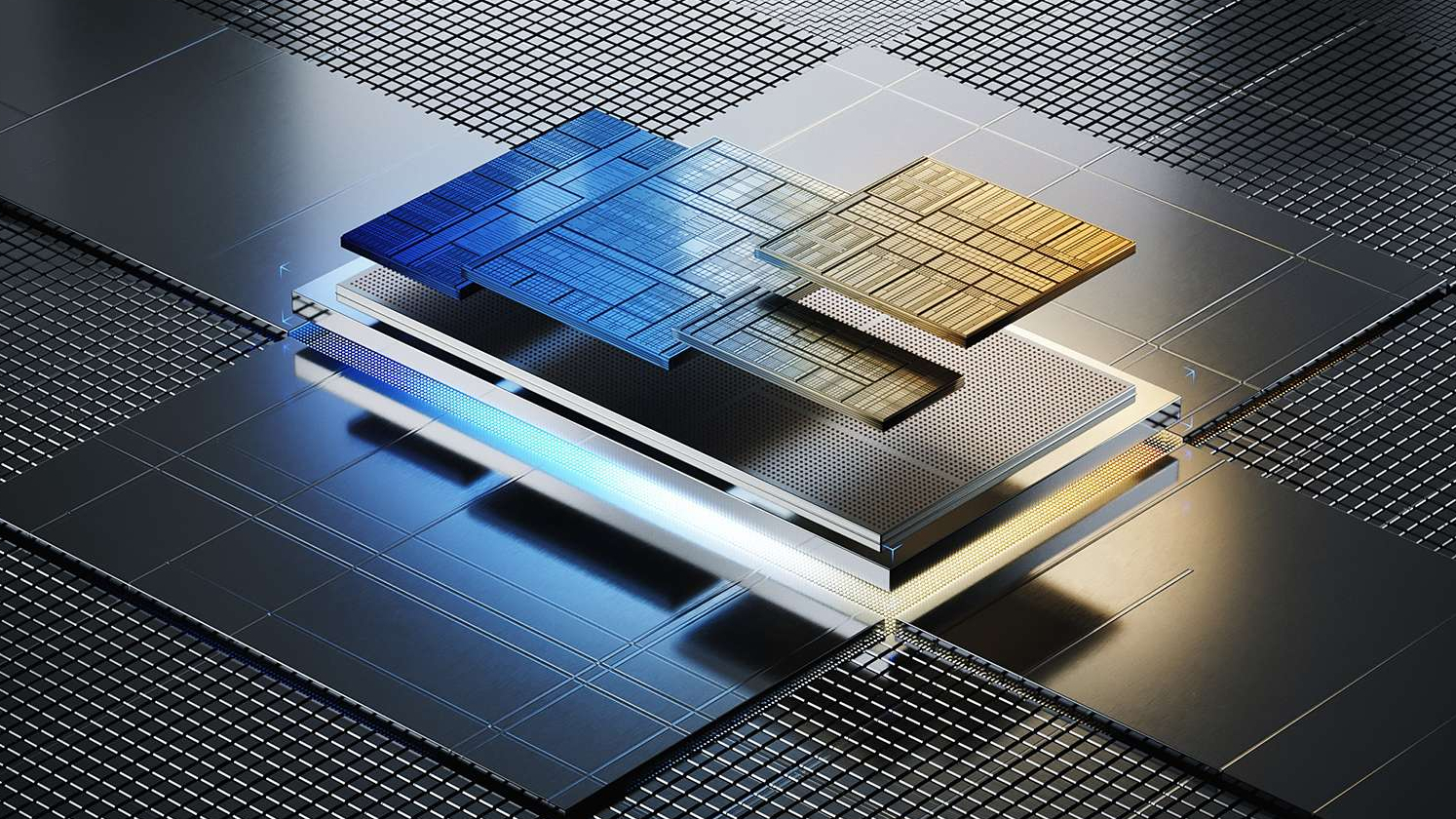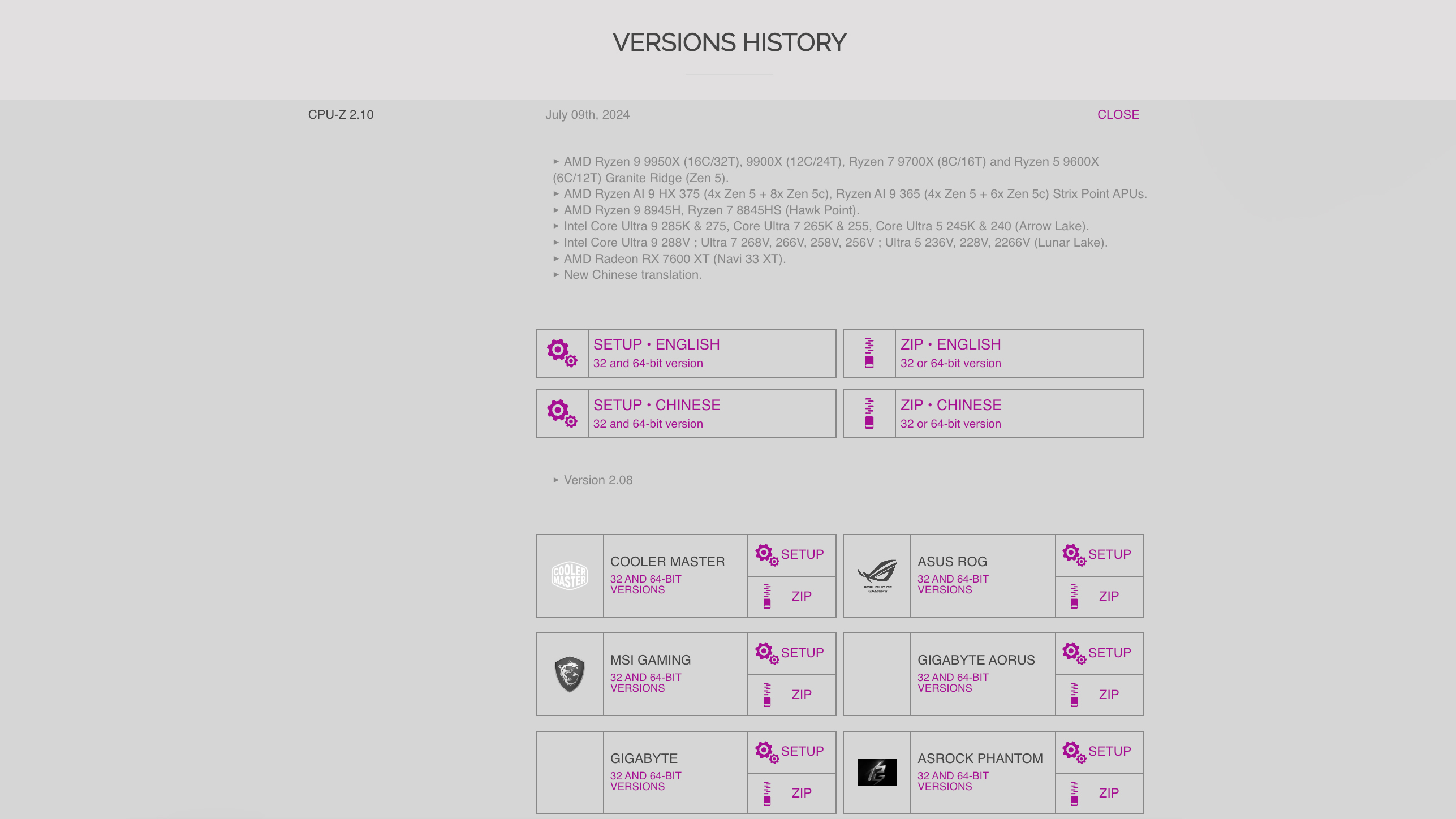Intel's upcoming CPU models confirmed by diagnostic tool — Arrow Lake and Lunar Lake SKUs revealed

Patch notes for CPU-Z version 2.10 have confirmed the names of several upcoming Arrow Lake-S desktop processors and Lunar Lake mobile CPUs. The changelog features two Ultra 9, two Ultra 7, and two Ultra 5 variants boasting an unlocked 'K' SKU and lower-end locked model. The Lunar Lake chips also include several Ultra 9, Ultra 7, and Ultra 5 variants but feature an all-new 'V' terminology, which is new for this generation.
The Arrow Lake-S model names featured in the CPU-Z changelog are the Core Ultra 9 285K, Ultra 9 275, Core Ultra 7 265K, Ultra 255, Core Ultra 5 245K and Ultra 240. The model naming structure confirms that Intel will make an unlocked 'K' SKU variant for each lineup, accompanied by a vanilla model with no letting scheme. The only difference is that Arrow Lake has adopted the new Core Ultra naming scheme as Intel's Meteor Lake processors.
These are by no means the only Arrow Lake-S processors we can expect from Intel; more models will inevitably come at launch, including low-powered variants and possibly Core Ultra 3 models (unless Intel refreshes the entry-level segment with Raptor Lake Refresh SKUs.) But these six main variants will comprise the bulk of Intel's Arrow Lake desktop lineup.
The number of Lunar Lake SKUs shown in the CPU-Z patch notes is far more numerous than that of the Arrow Lake counterparts. The changelog reveals four Core Ultra 7 models and three Core Ultra 5 variants. Models listed are the Core Ultra 9 288V, Core Ultra 7 268V, 266V, 258V, and 256V, and Core Ultra 5 236V, 228V, and 226V (the latter of which is typed as 2266V by accident in the patch notes). These SKUs are virtually identical to our earlier coverage of nine Core Ultra 200V CPUs that were leaked.
Lunar Lake and Arrow Lake are expected to debut later this year. Lunar Lake is Intel's next-generation mobile CPU architecture featuring up to 68% higher IPC on the E-cores and 14% higher IPC on the P-cores than Meteor Lake. The architecture was unveiled at Computex 2024, revealing most of Intel's enhancements over previous architectures. Lunar Lake is aimed primarily at thin and light notebook devices, with its primary competition being Qualcomm's Snapdragon X series processors.
Arrow Lake is an off-shoot of Lunar Lake, optimized for performance. Arrow Lake will take up the reins of Intel's previous Raptor Lake Refresh architecture, powering Intel's next generation of desktop processors and next-generation of high-performance mobile processors.
Get Tom's Hardware's best news and in-depth reviews, straight to your inbox.

Aaron Klotz is a contributing writer for Tom’s Hardware, covering news related to computer hardware such as CPUs, and graphics cards.
-
Reply
These are by no means the only Arrow Lake-S processors we can expect from Intel; more models will inevitably come at launch, including low-powered variants and possibly Core Ultra 3 models (unless Intel refreshes the entry-level segment with Raptor Lake Refresh SKUs.
Yes, for the entry-level Core i3 models, they will most likely use the "Raptor Lake" or even 'Meteor Lake' silicon instead. There is a high chance Intel would go this route.
But then Intel will have to drop the ULTRA moniker for differentiation. The Core 3 parts if planned by Intel will use a simple nomenclature like "Core 3 23X" series.
There won't be any "Ultra" codename here.
Based on previous data I have, the entire "Arrow Lake-S" lineup in total should include 13 models, including the 125W "unlocked" K-Series, 65W "non-K" and 35W "T" SKUs.
Apart from three "K" series chips, the lineup will include 5 non-K chips rated at the 65W (PL1) TDP, and 5 chips featuring a TDP of 35W (PL1).
3 K chips.
5 non-K chips.
5 T chips. -
TechyIT223 Once again here's my vague prediction. 😉Reply
Ultra 9 285K = i9-14900K
Ultra 9 275 = i9-14900
Ultra 7 265K = i7-14700K
Ultra 7 255 = i7-14700
Ultra 5 245K = i5-14600K
Ultra 5 240 = i5-14400 -
in_the_loop " Lunar Lake is Intel's next-generation mobile CPU architecture featuring up to 68% higher IPC on the E-cores and 14% higher IPC on the P-cores than Meteor Lake."Reply
So how, if anything, does this translate to how Arrow Lakes uplift will be compared to Raptor Lake.
I mean Meteor Lake was a Ultra Mobile platform, right?
Can the "up to 68%" higher IPC on the E-cores really be translated to a similar gain for the e-cores on Raptor Lake to Arrow Lakes e-cores? -
JamesJones44 The SKU numbering is interesting, on desktop it seems like ending with a SKU of 5 is mean more for "gaming"? I know the Intel docs say the K suffix denotes that too, but looking at the x5 SKU it seems to line up with what would have been considered a gaming worthy CPU in the past.Reply
Lunar Lake is a little harder to tell (68 vs 66 for example). -
Replyin_the_loop said:Can the "up to 68%" higher IPC on the E-cores really be translated to a similar gain for the e-cores on Raptor Lake to Arrow Lakes e-cores?
Can't say with surety, but I doubt we might be getting a similar gain in IPC with Arrow Lake E-core arch as well, at least on the Arrow Lake-S desktop processor lineup.
The desktop CPU architecture is going to be different than what Intel has used on its Lunar Lake Mobile SoC lineup. Lunar Lake focused on a more power optimized E-core architecture, since these were the target for low power mobile devices.
But for the Arrow Lake-U, -H, -HX parts it might be a different story. I mean the Arrow Lake-HX (high-end notebook), Arrow Lake-H (performance notebook) and Arrow Lake-U (for thin and light notebooks) series of processors. -
Amdlova That ultra sound like Japanese action hero...Reply
Ultra man something like that... "Intel ultra need to defeat evil bosses". That will be a meme in future. -
TerryLaze Reply
https://www.urbandictionary.com/define.php?term=AMD%20FartripperAmdlova said:That ultra sound like Japanese action hero...
Ultra man something like that... "Intel ultra need to defeat evil bosses". That will be a meme in future. -
Meanwhile Dual-core CPUs are still alive and kicking, coming from the "Raptor Lake" lineup. Intel 310 spotted.Reply
Appears to be a direct successor to the Intel Processor 300.
https://www.intel.com/content/www/us/en/products/sku/236846/intel-processor-300-6m-cache-up-to-3-90-ghz/specifications.html
Two P-Cores and 4 threads, but with a slightly faster clock speed. Roughly around 4.1 GHz.
https://browser.geekbench.com/v6/cpu/6867189
https://i.imgur.com/Cu3qQMe.png -
ReplyJamesJones44 said:Lunar Lake is a little harder to tell (68 vs 66 for example).
The last digit/number most likely signifies the amount of on-package memory/DRAM the chip sports, IMO.
Since all Lunar Lake processors feature memory on package, the last digit of their SKU number directly relates to the amount of memory each processor is having, which would be 6 for 16GB and 8 for 32GB.
For example, 288V sports 32GB dual rank memory.
228V will again have 32GB.
266V has 16GB 1R MoP and so on.
By the way, Some chips are still MIA. The recently spotted 234V SKU is missing, for example. Another model, 254V is also missing from the list.
There are more, so this lineup isn't complete. Intel Core Ultra 5 234V "Lunar Lake" CPU (16GB variant):
https://i.imgur.com/j3AxoHt.jpeg -
TechyIT223 ReplyMetal Messiah. said:Meanwhile Dual-core CPUs are still alive and kicking, coming from the "Raptor Lake" lineup. Intel 310 spotted.
Appears to be a direct successor to the Intel Processor 300.
https://www.intel.com/content/www/us/en/products/sku/236846/intel-processor-300-6m-cache-up-to-3-90-ghz/specifications.html
Two P-Cores based on the Raptor Cove core architecture and 4 threads, but with a slightly faster clock speed. Roughly around 4.1 GHz.
https://browser.geekbench.com/v6/cpu/6867189
https://i.imgur.com/Cu3qQMe.png
Doesn't surprise me to see dual core SKUs still getting support and makeover from Intel.
